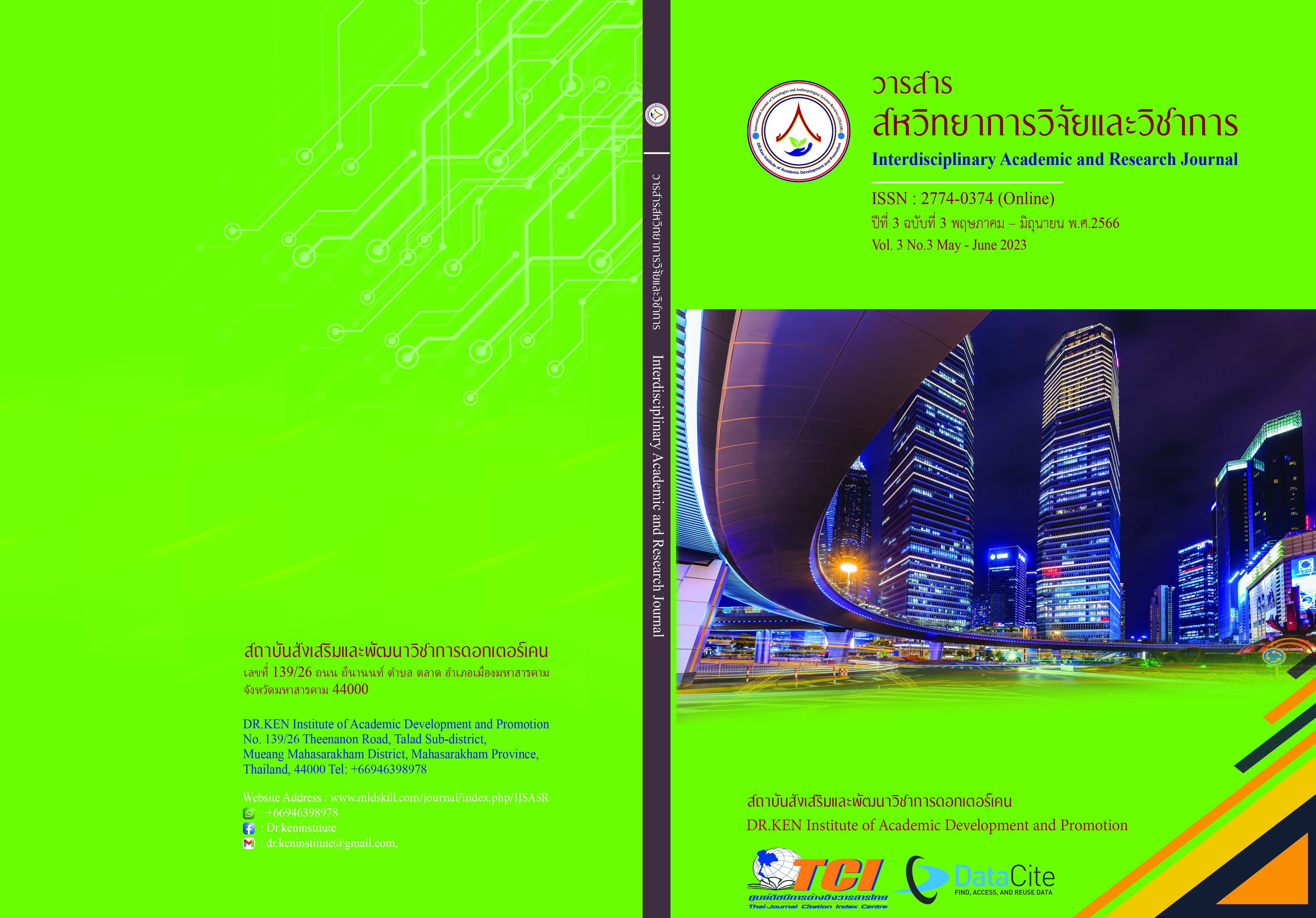Problems and Guidelines of Student Support System Operation of Schools under the Office of Yasothon Primary Education Service Area 2
DOI:
https://doi.org/10.14456/iarj.2023.139Keywords:
Student Support System; , Yasothon Primary Educational Service Area Office 2; , Operational ProblemsAbstract
The student support system is the care and support for the students with the teacher advisor as the main person and there is a systematic work process to prevent, solve problems, and promote the development of students to have desirable characteristics. The student care and support system are a systematic process of caring, and helping students with steps, with a teacher advisor as the main worker. Therefore, this research has the following objectives (1) To study the problem of student advisory care system implementation. And 2) to compare the problems of student support system implementation of advisor teachers classified by gender, work experience, and educational background. The sample group was 95 school advisors under the Yasothon Primary Educational Service Area Office 2 totaling 95 people. The instrument used to collect data was a questionnaire on student support system operation problems. The statistics used for data analysis were mean, standard deviation, t-test, and F-test. The results showed that; (1) The problems in the overall operation of the student care and support system were at a high level. (2) Problems in the operation of the student support system classified by sex found that the overall mean was not different, when considering each side, it was found that the student referral was significantly different at .05, the female advisors had more problems in implementing the student support system than male advisors. (3) Problems in the operation of the student support system classified by work experience found that the overall average and each aspect were not different. And (4) Problems in the operation of the student support system classified by educational qualification found that the overall average and each aspect were not different.
References
กนกธร วงษ์จันทร์. (2552). ความพึงพอใจของผู้ปกครองที่มีต่อการดำเนินงานระบบดูแลช่วยเหลือนักเรียนโรงเรียนมัธยมท่าแคลง จังหวัดจันทบุรี. วิทยานิพนธ์ศึกษาศาสตรมหาบัณฑิต, สาขาวิชาการบริหารการศึกษา มหาวิทยาลัยบูรพา.
กรมสุขภาพจิต. (2546). คู่มือครูระบบดูแลช่วยเหลือนักเรียนช่วงชั้นที่ 1 ช่วงชั้นที่ 2 (ชั้นประถมศึกษาปีที่ 1 – 6).กรุงเทพฯ : องค์การสงเคราะห์ทหารผ่านศึก.
กระทรวงศึกษาธิการ. (2552). หลักสูตรแกนกลางการศึกษาขั้นพื้นฐาน พุทธศักราช 2551. กรุงเทพฯ : โรงพิมพ์ชุมนุมสหกรณ์การเกษตรแห่งประเทศไทย.
ดารารัตน์ สุนทรมณีรัตน์. (2556). สภาพและปัญหาการดำเนินงานระบบการดูแลช่วยเหลือนักเรียนของโรงเรียนในสังกัดสำนักงานเขตพื้นที่การศึกษาขอนแก่น เขต 1 – 5. วารสารวิจัยและพัฒนา มหาวิทยาลัยราชภัฏเลย. 8 (24), 45-54.
ผ่องพรรณ สายทอง. (2545). การดำเนินงานปัญหาอุปสรรคและแนวทางแก้ไขระบบการดูแลช่วยเหลือนักเรียนตามโครงการสุขภาพจิตสู่สถานศึกษาของโรงเรียนนำร่อง สังกัดกรมสามัญศึกษาจังหวัดเชียงใหม่. การศึกษาค้นคว้าตนเอง (การศึกษามหาบัณฑิต) มหาวิทยานเรศวร.
พยุง ปะกำแหง. (2555). ปัญหาการดำเนินงานระบบดูแลช่วยเหลือนักเรียนมัธยมศึกษาในจังหวัดตราด สังกัดสำนักงานเขตพื้นที่การศึกษามัธยมศึกษา เขต 17. กรุงเทพฯ: มหาวิทยาลัยนอร์ทกรุงเทพ.
สมพงษ์ มะนอ. (2554). ปัญหาการดำเนินงานระบบดูแลช่วยเหลือนักเรียนโรงเรียนระดับประถมศึกษา สำนักงานเขตพื้นที่การศึกษาประถมศึกษาปัตตานี เขต 3. กรุงเทพฯ: มหาวิทยาลัยนอร์ทกรุงเทพ.
สำนักงานเขตพื้นที่การศึกษาประถมศึกษายโสธร เขต 2. (2565). ระบบฐานข้อมูลข้าราชการครูและบุคลากรทางการศึกษา. ข้อมูลสารสนเทศ: สำนักงานเขตพื้นที่การศึกษาประถมศึกษายโสธร เขต 2.
สำนักงานคณะกรรมการการศึกษาขั้นพื้นฐาน. (2561). นโยบายสำนักงานคณะกรรมการการศึกษาขั้นพื้นฐาน ปีงบประมาณ พ.ศ. 2561. กรุงเทพฯ: โรงพิมพ์ชุมนุมสหกรณ์ การเกษตรแห่งประเทศไทย.
สุนิสา มาสุข. (2560). การดำเนินงานระบบดูแลช่วยเหลือนักเรียนของครู โรงเรียนสังกัดองค์การบริหารส่วนจังหวัดระยอง. งานนิพนธ์ปริญญามหาบัณฑิต สาขาวิชาการบริหารการศึกษา คณะศึกษาศาสตร์ มหาวิทยาลัยบรูพา
Yamane. T., (1973). Statistics: an introductory analysis. New York: Harper & Row.
Downloads
Published
How to Cite
Issue
Section
License
Copyright (c) 2023 อนุพันธ์ รัตนวัน

This work is licensed under a Creative Commons Attribution-NonCommercial-NoDerivatives 4.0 International License.
Copyright on any article in the Interdisciplinary Academic and Research Journal is retained by the author(s) under the under the Creative Commons Attribution-NonCommercial-NoDerivatives 4.0 International License. Permission to use text, content, images, etc. of publication. Any user to read, download, copy, distribute, print, search, or link to the full texts of articles, crawl them for indexing, pass them as data to software, or use them for any other lawful purpose. But do not use it for commercial use or with the intent to benefit any business.
















.png)


